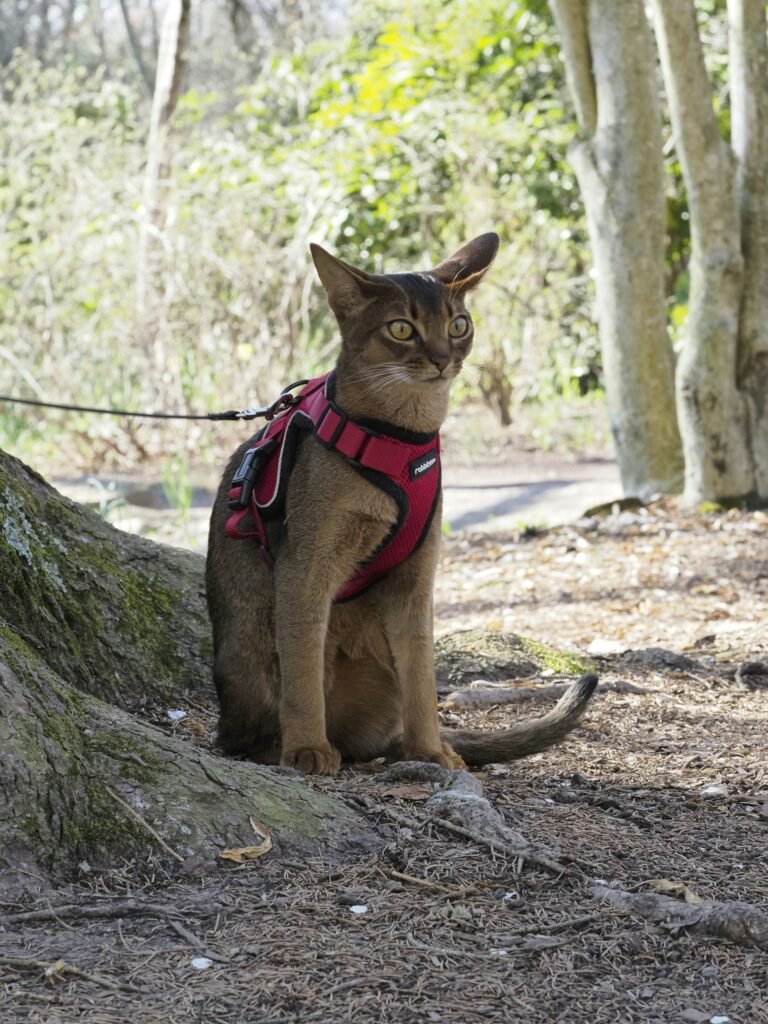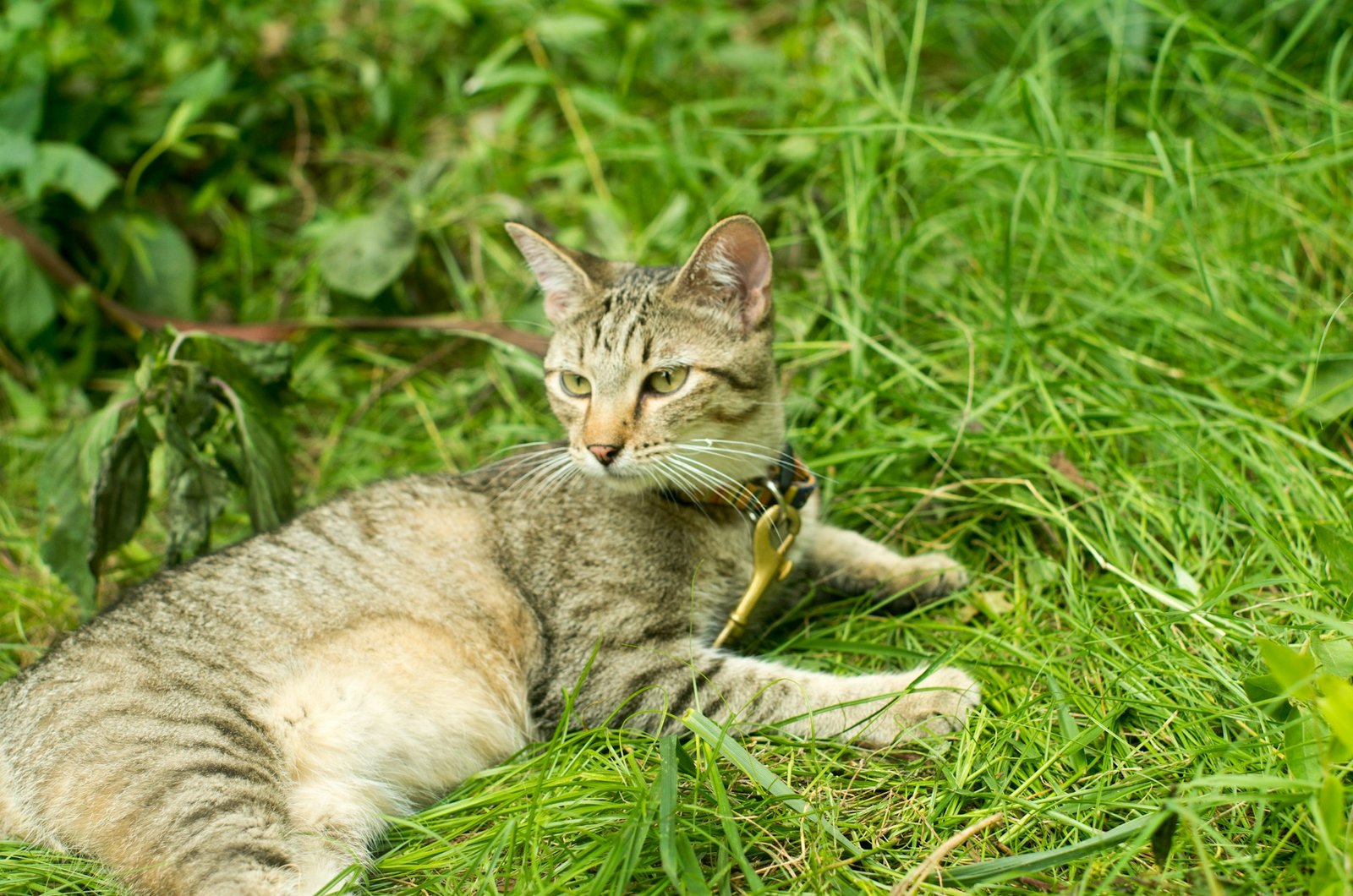So, you’ve got a cat who thinks they run the show (spoiler: they probably do). But you know what? Training a cat is possible. Not that easy, but possible.
This 28-day plan breaks everything into bite-sized chunks (because we all know cats don’t have the attention span for anything too intense).
Each week focuses on a different skill, so by the end of the month, your cat might actually listen to you. Maybe.
Week 1: Name Recognition and Basic Commands

Before you do anything fancy, you need your cat to know their name. Otherwise, how are you going to get their attention when they’re halfway up a tree chasing a squirrel? (Answer: You’re not.)
Day 1-3: Say Their Name, Get Their Attention
- Start indoors where distractions are minimal.
- Say their name in an excited, happy tone. Think “What’s in the can opener” happy.
- Reward them with treats or affection every time they look at you. Consistency is key!
Day 4-6: Add Some Movement
- Call their name and take a step back. When they move toward you, give them a treat.
- Gradually increase the distance until they’re coming from across the room. Boom—first step toward off-leash greatness!
Day 7: Test Their Focus
- Try calling them when they’re distracted (like when they’re mid-pounce on your shoelace).
- Reward them for even partial success. Let’s be real—cats take their sweet time.
Week 2: Introducing the Harness

Let’s talk harnesses. Cats hate them—at first. But trust me, you’ll feel a lot better knowing they can’t make a mad dash into traffic while they’re “exploring.”
Day 8-10: Make the Harness Their New Best Friend
- Leave the harness near their favorite sleeping spot. Let them sniff it, bat it around, or glare at it suspiciously.
- Give them treats when they interact with it. Positive vibes only, people!
Day 11-13: Put It On—For 5 Minutes
- Slip the harness on while they’re calm (read: half-asleep).
- Keep it loose and only leave it on for a few minutes. Don’t forget to reward them like they just cured cat allergies.
Day 14: Test Drive Indoors
- Once they’re okay with the harness, attach the leash and let them walk around the house. They’ll probably flop over dramatically—totally normal. Just keep encouraging them.
Week 3: Exploring the Great Outdoors (Safely)

It’s time to venture outside, but don’t just throw open the door and hope for the best. (That’s how you end up chasing your cat down the block in slippers.)
Day 15-17: Leash Walks in a Secure Space
- Start in your backyard or an enclosed area. Keep it short—five minutes tops.
- Let them sniff everything. And I mean everything. They’re taking it all in.
Day 18-20: Expand Their Horizons
- Gradually increase the time outside. Keep them on the leash and stick to safe areas.
- Watch for hazards like toxic plants or random dogs. No, they won’t thank you, but their safety is your reward.
Day 21: Test Recall Outdoors
- Practice calling their name and rewarding them for coming to you. Keep the leash on in case they decide “nah” is their answer.
Week 4: Advanced Skills and Off-Leash Prep

Feeling brave? Let’s step up the game. This week is all about making sure they come home when they’re supposed to and (hopefully) stay out of trouble.
Day 22-24: The Food Cue
- Shake their treat container or tap their food bowl and call their name. The goal: to associate the sound with “Oh, dinner’s ready!”
- Practice this outdoors with them on a leash. You’ll thank me when they bolt back to you instead of running into a neighbor’s yard.
Day 25-26: Off-Leash Practice in a Controlled Space
- If they’ve mastered the leash and recall, try letting them roam a secure, enclosed area.
- Supervise closely. Cats are stealthy little escape artists.
Day 27-28: Freedom (With Limits)
- Gradually increase their off-leash time. Always keep an eye on them and make sure they can hear you calling.
- Remember, freedom comes with boundaries (and treats).
Bonus Tips for Success
- Microchip your cat. Just in case they decide to “explore” farther than planned.
- Use a GPS tracker. Think Find My iPhone, but for your furry adventurer.
- Be patient. Cats do things on their schedule, not yours. Reward small wins, and don’t sweat setbacks.
The Bottom Line: Training a Cat is a Marathon, Not a Sprint
By the end of this 28-day plan, your cat won’t be perfect (let’s not kid ourselves), but they’ll be safer, happier, and a bit more manageable.
And hey, if all else fails, at least you tried—and maybe you’ll have some hilarious training fails to share with friends 😉
Good luck!





